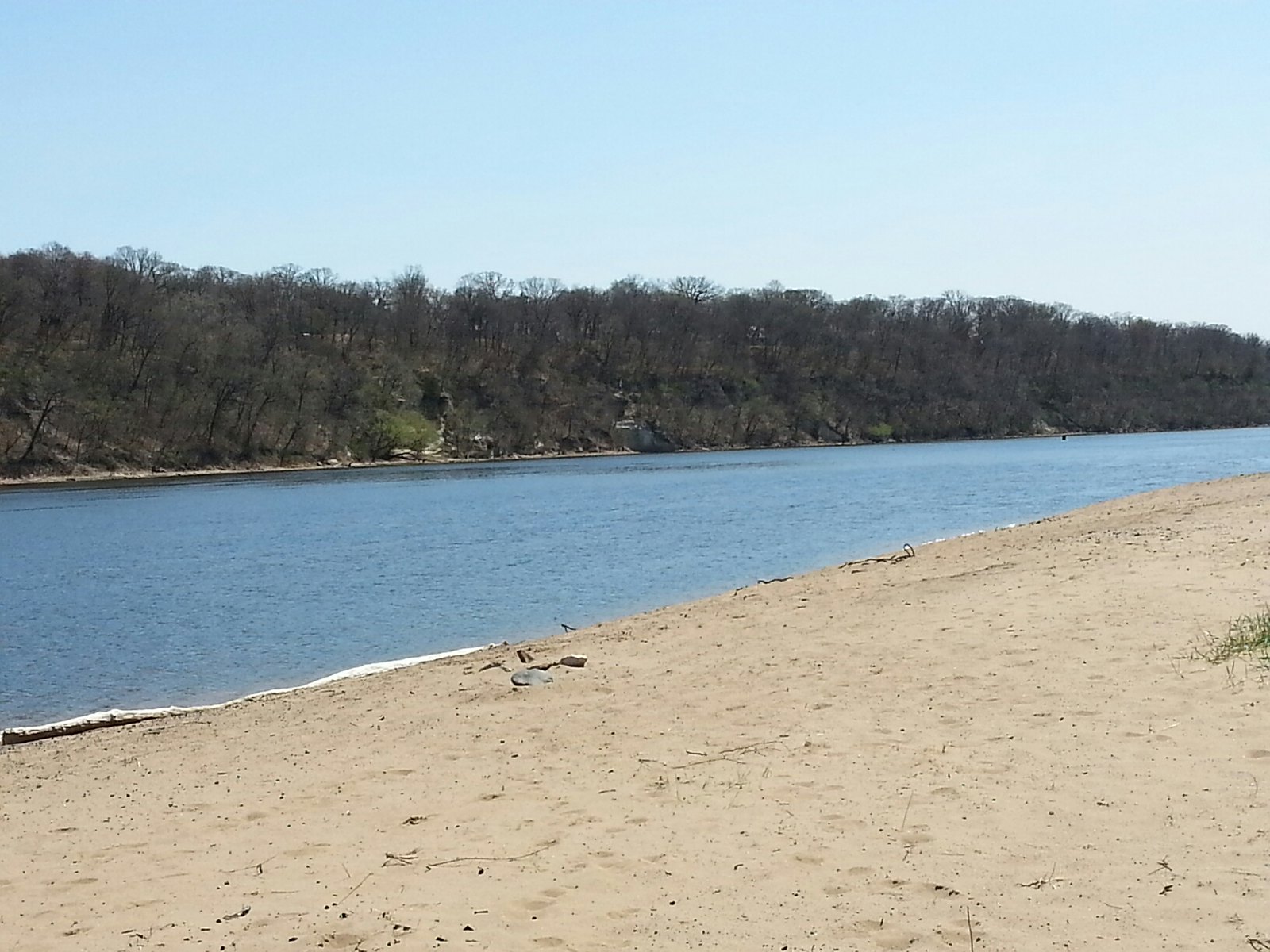Geology and natural history of the Mississippi River Gorge

The river gorge through the Twin Cities is unique along the Mississippi River.
River gorge history highlights
- Spanning from downtown Minneapolis to roughly the confluence of the Minnesota and Missisissippi River near Fort Snelling, our local river gorge is the only true gorge along the Mississippi's entire 2,350-mile length.
- 45,000 to 12,000 years ago, during the last ice age, glaciers advanced and retreated many times over this area to slough away all the younger or top layers of rock formations.
- The glaciers melted 12,000 years ago, forming an immense amount of water to create our current rivers.
- Saint Anthony Falls was formed 12,000 years ago near what is now downtown Saint Paul. The falls receded upstream for 12,000 years to their current location near downtown Minneapolis.
Geologic layers of the gorge
![[Graphic: The geologic layers of the Mississippi Gorge area]](/sites/default/files/shared/images/gorge_stewards/geologic_layers.gif)
• Glacial Till
This is our modern soil, sediment and till left from the movement of glaciers. It can be 100 feet thick in some areas.
• Platteville Limestone
This layer is approximately 30 feet thick and contains fossils from the floor of an Ordovician Period Ocean, which covered the area.
• Glenwood Formation
This is a very soft layer of shale, mainly remains from the Ordovician Sea.
• Saint Peter Sandstone
This is a softer sedimentary rock, which was easily carved away by the falls.
How the falls were formed
The gorge was formed from the turbulent water of Saint Anthony falls wearing away the lower soft layer of Saint Peter Sandstone and undercutting the layers of shale and limestone above. Top layers began to crumble and the falls retreated slowly upstream for 12,000 years to their current location in Minneapolis.
![[Graphic: Geologic layers are worn away by water flowing over the falls.]](/sites/default/files/shared/images/gorge_stewards/falls_diagram.gif)
The falls continued this gradual carving action, receding at a rate of 4 feet per year and moving 10 miles upstream.
European-descended people immigrated to this area in the 1800s while the falls were still receding. Wanting to preserve the falls as a source of power, they built a dam of sorts to stabilize the falls. If the falls were left to run naturally and continue their recession, eventually they would have smoothed out into rapids just north of downtown Minneapolis due to differences in streambed geology in that stretch.
A little over 3,800 years ago, the falls were located near the railroad bridge in the Seward neighborhood in Minneapolis. (This can be figured out by measuring the distance from the current location of the falls, divided by four, the rate of falls retreat, and subtracting the number of years since 1870, when the falls were stabilized.)
Current habitat and ecology
- Birds of the River Gorge
The gorge is used as a migration flyway for approximately 150 species of birds, including 45 nesting species; 40% of North America's migratory waterfowl use the river gorge as a migration corridor. Local ornithologist Dave Zumeta has been tracking the bird species at key Minneapolis River Gorge sites for many years. Dave's work helps us evaluate the improvement in wildlife habitat provided by FMR's restoration and volunteer River Gorge Stewardship efforts, as well as serving as an indicator of the overall health of our local stretch of the Mississippi flyway. - Fish of the River Gorge
Historically 120 native fish species thrived in the rapids of the gorge, 30 are currently remaining. Konrad Schmidt compiled this list of fish species reported in the gorge, which extends from the original mouth of the Minnesota River at Fort Snelling to the upper Saint Anthony Falls Lock and Dam (River Miles 845.3- 853.9). Because of accessibility, the list also includes fishes reported in Minnehaha Creek downstream of the falls to the Mississippi River. - The primary native ecosystem consists of an oak forest with open spaces of prairie plants. The current ecology mainly consists of deciduous forest. Due to the suppression of fire, more fire-sensitive species are found. Some of these species include maples, elms, basswood, and invasives such as buckthorn.
- Several human-induced problems are degrading the gorge's ecology, such as invasive or displaced species that crowd out native plants that once provided habitat, foot and bike traffic erosion, suppression of fire, rerouting of water (pavement and storm drains), and pollution in general.
Join the River Gorge Stewards!
Learn more or if you're ready to join the River Gorge Stewards email list, with six to eight messages a year about upcoming River Gorge Stewards volunteer and educational events, contact our volunteer coordinator at volunteer@fmr.org.
Become a River Guardian
Sign up and we'll email you when important river issues arise. We make it quick and easy to contact decision-makers. River Guardians are also invited to special social hours and other events about legislative and metro river corridor issues.